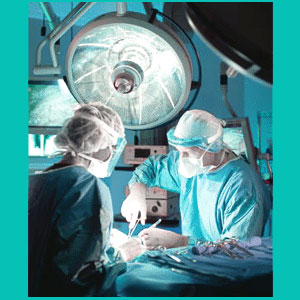
Cervical degenerative disc disease surgery is the most extreme type of treatment option used to resolve rare symptomatic disc degeneration in the neck region. Neck surgery should only be considered in the most consequential and treatment-resistant structural pain complaints. This is because the procedures utilized are risky and demonstrate poor outcomes for the majority of patients.
Research statistics clearly show that most DDD is misdiagnosed as the true cause of pain, making any invasive care plan an ethically-troubling conundrum. Surgery for these cases of DDD is particularly disturbing, since although the degenerative disc disease is coincidental to the symptoms, the operative procedure does real and verifiable damage to the spinal structures. In the rare instances of truly pathological disc degeneration, surgery can help, but is still not overly successful in providing relief for many patients. While the surgical process is far from perfect, there are considerations that can improve the odds for a positive outcome.
This essay helps patients to decide if surgical recommendations are prudent for treating their cervical disc desiccation and assists in focusing on the best types of invasive treatment, since there are several different options available.
Cervical Degenerative Disc Disease Surgery Procedures
Surgical interventions for degenerative disc disease fall into 2 main categories. The most common is spinal fusion. In the spondylodesis procedure, the degenerated discs are removed from the neck and replaced by bone grafts and surgical hardware to prevent intervertebral movement in the operated levels.
The ideology of fusion is contrary to normal and natural spinal design and enacts a downward spiral of degeneration which will spread throughout surrounding spinal levels like wildfire. Of course, this danger is rarely explained by surgeons, allowing patients to find out the hard way, once they require multiple follow-up operations a few years down the line. Fusion is an ideal way to practically guarantee a return customer for any surgeon.
The less common surgical selection is artificial disc replacement surgery. This technique preserves spinal functionality by replacing worn discs with synthetic vertebral spacers that are harmonious to the natural design of the backbone. Disc replacement is promising, but long-term results still have not shown it to be advantage over fusion. However, we give it the nod on the basis of functional ideology alone.
Our main concern is that hardware-associated problems are still commonplace with replacement discs, so hopefully continuing improvements will make this technique the definitive choice for patients in the future.
Cervical Disc Disease Surgery Risks
As with any operation, there are serious risks involved in all DDD surgical procedures. Since the operation is performed on the neck and involves significant danger of spinal nerve or spinal cord damage, patients must be extremely cautious when making the choice to undergo surgery.
Infection is possible and can become very serious or even life-threatening.
Since both fusion and disc replacement entail the use of surgical hardware, device failure or anatomical rejection are both commonplace.
Spinal fluid leaks are very frequently suffered and might require additional surgical interventions to correct.
However, the most common complication of disc disease surgery is simply poor postoperative results. Most procedures fail, since the actual source of pain is not linked to the disc desiccation. So, even once the degenerative condition is rectified, the actual causation remains, undetected and untreated. Failed disc surgery is a rampant problem in the back and neck pain industry.
Cervical Degenerative Disc Disease Surgery Guidance
We are sure that any reader who is aware of our writing already knows that we are admittedly anti-surgery in our treatment philosophy. We have seen far too many horror stories and ruined lives to ever endorse surgery, at least not in its present forms, except in the most extreme of cases.
For degenerative disc disease, the procedures are just as brutal, but the suspected causative condition is rarely even justified to receive surgical care. This is because most cases of degenerated discs are never proven to be pathological or symptomatic in any way.
Furthermore, the overwhelming majority of patients suffer pain that is far too wide-ranging to ever come about from a single desiccated disc. In a great number of the patient profiles we see, the symptoms are illogical, given the suspected causation, yet surgery is performed nevertheless
For patients who do undergo cervical degenerative disc disease surgery, our research has classified them into 2 main categories, with only a minority of patients falling outside these defining criteria:
The first category of patients include those who enjoy relief for a few months, or even a few years, but then suffer a full-blown neck pain relapse necessitating more surgeries. This is seen more often in spinal fusion recipients.
The second category of patients include those who are immediately worsened by the operation and regret it, since it provides no relief and actually has made the pain worse, while simultaneously doing irreparable damage to the spine. This results is also seen more often in fusion patients.
Since DDD is the actual cause of pain in a minority of patients who are diagnosed, it is no surprise that this virtually identical minority are the few who enjoy truly positive surgical results.
In summary, it seems that patients who are facing surgery should be more concerned with the diagnostic process than with the surgical endeavor itself. This is because without accurate and correct identification of the true origin of pain, no treatment, including and especially surgery, will be effective in virtually any case.
Herniated Disc > Cervical Degenerative Disc Disease > Cervical Degenerative Disc Disease Surgery





